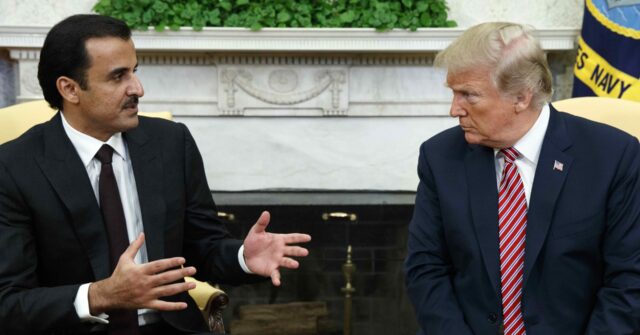In a significant geopolitical development, Qatar has reportedly instructed Hamas leaders to vacate its territory, marking a substantial shift in the Gulf nation’s stance toward the Palestinian militant group. This decision comes closely after the election of Donald Trump as President of the United States, indicating that the change may reflect a broader adjustment in U.S.-Qatar relations regarding terrorism and regional security. For years, leaders of Hamas have found refuge in Qatar, which, along with Turkey, has been a haven for the group despite its designation as a terrorist organization by several countries, including the U.S. This context raises questions about Qatar’s role as a supporter of Hamas and the impact of U.S. foreign policy on its actions.
Reports suggest that the Biden administration had previously pressured Qatar to distance itself from Hamas, but it was Trump’s election that may have catalyzed Qatar’s actions. The shift indicates that U.S. diplomatic influence remains a significant factor in regional alliances and the approaches taken by nations in the Gulf. Interestingly, both Qatar and Turkey are considered allies of the United States, with Qatar granted the status of a major non-NATO ally. However, their ongoing support for Hamas has created tension, complicating the U.S.’s diplomatic strategies in the Middle East and its efforts for peace between Israel and Palestine.
According to Israeli media, Hamas’s refusal to engage in sincere negotiations regarding hostages and ceasefire terms eventually led to the ultimatum from Qatar. An American source revealed that the push from Washington for Qatar to remove Hamas was a response to the group’s dismissal of a ceasefire and hostage arrangement proposed by the U.S. Historically, Qatar has maintained its ties with Hamas while facing scrutiny from Western allies. The recent developments signal a possible reevaluation of these relationships in light of escalating tensions and the changing U.S. administration.
The dynamics surrounding Hamas’s leadership are further complicated by the assassination of Ismail Haniyeh, the group’s political chief, in late July while he was in Tehran. Though Israel is widely thought to be responsible for the attack, it has not officially acknowledged this. This assassination exemplifies the precarious position of Hamas leaders and the increasingly volatile environment they navigate. Additionally, it highlights the potential vulnerabilities faced by political figures operating within the broader context of regional power struggles and international relations.
The new U.S. administration, under Biden, appears to be recalibrating its strategy towards the Middle East, particularly regarding groups it designates as terrorist organizations. Pressure on Gulf states like Qatar to sever support for Hamas aligns with a broader U.S. strategy aimed at stabilizing the region and mitigating support for terrorist activities. This adjustment reflects the U.S.’s ongoing challenges in addressing terrorism while maintaining diplomatic relations with nations that have conflicting interests. The call for Hamas to leave Qatar signifies a potential turning point in the U.S.’s ability to influence regional players effectively.
As diplomatic efforts unfold, the implications of Hamas’s expulsion from Qatar remain to be seen. The potential for shifts in alliances, coupled with the ongoing volatility in Palestinian politics, sets the stage for future conflicts and negotiations. The United States, now vigilant about Hamas’s presence, is likely to pursue a multifaceted approach addressing both humanitarian issues and security concerns while adapting to the complex realities of Middle Eastern geopolitics. Ultimately, these developments can reshape the landscape of Palestinian leadership, its connections with regional powers, and the prospect of achieving lasting peace in the region.

